First off, let’s get the definition right. A talent pool is a database of potential candidates who have, in some way, shown an interest in working for your organization.
Careful, though — a great talent pool isn’t just a list of names and phone numbers. A properly curated talent pool provides rich information on each potential candidate, including but not limited to their experience, skills, career goals, and cultural fit.
Those job candidates are primed and ready to be contacted if a role needs filling. While it’s unlikely they’ll already have been fully interviewed, they will at least be partially vetted to ensure they meet the core standards of your organization.
TL;DR – Key Takeaways
- Talent pooling is the process of building effective talent pools by collecting detailed information about job candidates for future positions. It often means identifying their skills, competencies, and qualifications and organizing them into different groups in your internal candidate database.
- Talent pools and talent pipelines are complementary tools for recruiting and hiring top-notch talent, with the latter focused on qualified candidates and talent pools serving as a database of passive candidates.
- Having an effective talent pool provides the benefits of speed to hire, more engaged candidates, and reduced costs in the recruitment process.
- You can use various sources when building talent pools, including social media, careers pages, job boards, previous applicants and employees, referrals, and recruitment agencies.
- To keep your talent network high-quality, focus on culture, use niche job boards, test candidates during the application process, conduct background checks, and regularly cleanse outdated data.
- Combining skills testing with talent pooling in Toggl Hire allows you to implement inbound recruiting as part of your recruitment strategy, speed up time-to-hire, and improve candidate experience.

Talent pools vs. talent pipelines
Talent pools and talent pipelines are two different but complementary tools for recruiting and hiring top-notch talent.
Talent pipelines are filled with pre-vetted candidates who are considered qualified for specific roles. These could be past applicants who aced the interviews but were not hired, candidates referred by your employees, or sourced talent that engaged with your recruiters in the past.
On the flip side, talent pools are more like your secret stash of future candidates. It’s a database of passive talent who have shown some interest in working for your organization. These candidates might not have gone through the full interview process yet, but they’ve at least been partially qualified to make sure they meet your company’s standards.
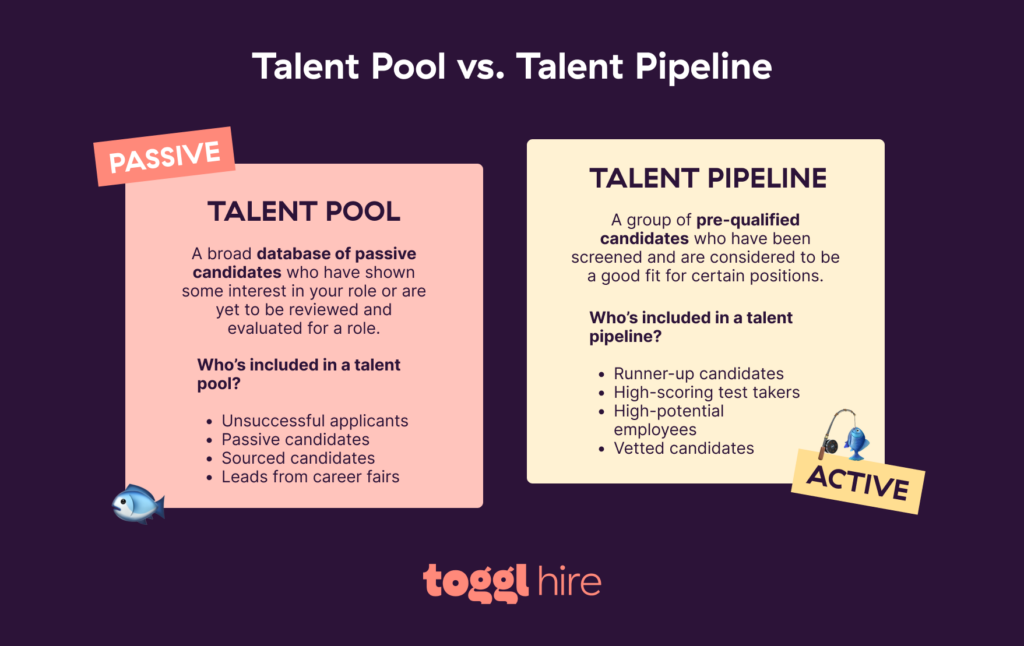
The best approach for your company depends on what you need and what your goals are.
If you’re looking to fill a bunch of open positions in a jiffy, then focusing on building a talent pipeline is the way to go. But if you have the luxury to think long-term, want to find future candidates, and build relationships with top talent, then building a talent pool is a better way forward.
What are internal talent pools?
Internal talent pools are a collective pool of high-performing, high-potential current employees in your organization with a proven track record and aptitude to take on new challenges and responsibilities.
Maintaining internal talent pools is crucial for efficiently dealing with various planned and unplanned changes like business growth, attrition, succession, retirement, etc. Internal talent pools help the HR department keep tabs on folks who have the skills and experience to fill future roles when the need arises.
Having an internal talent pool is super beneficial in a few ways:
- It’s an easy and efficient way for recruiters to map available talent to open positions.
- It makes filling open roles a lot faster and cheaper.
- It creates a culture of internal mobility, boosting your employer brand and helping to retain top employees.
Think of it this way: when employees know they have a chance to grow and move up within the company, they’re more likely to be excited about their work. And when employees are excited, they do better work, provide awesome customer service, and come up with killer ideas.
Plus, having an internal talent pool can help reduce employee turnover because they see a clear path to advancement.
The benefits of a talent pool in recruitment
Having a list of pre-qualified, enthusiastic, and aligned candidates ready to go is a recruiter’s dream. While high-quality talent pools are by no means a walk in the park to set up, they offer a range of benefits.
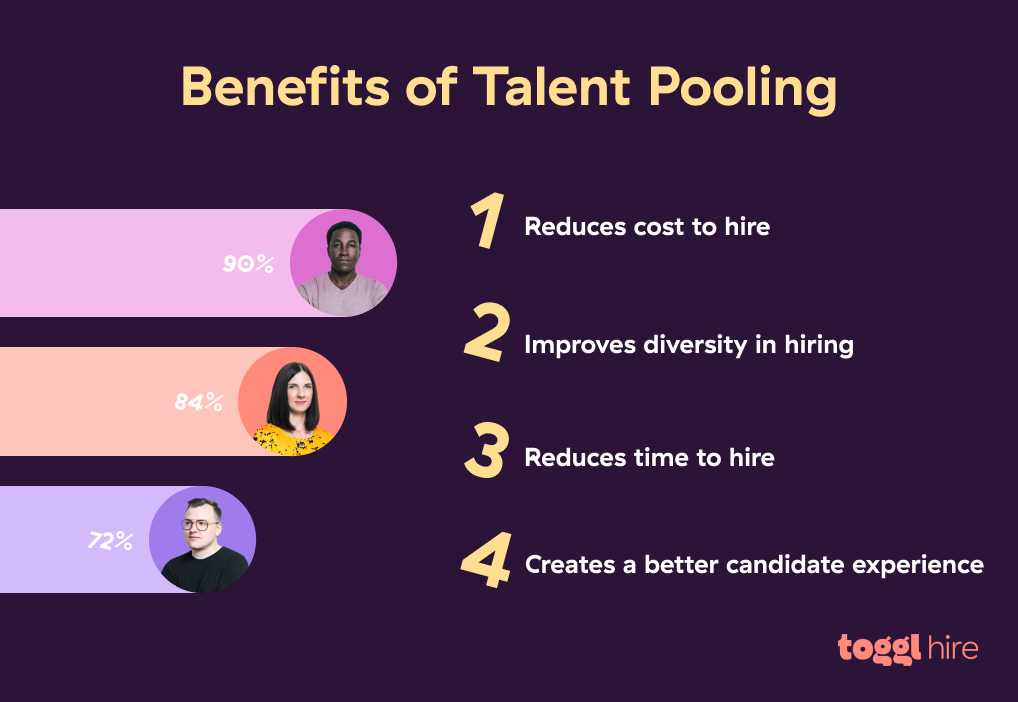
1. Speed to hire
The key benefit to having a high-quality talent pool is the on-demand set of candidates you have at your disposal.
For most businesses, one of the key challenges for their talent strategy is the delay they face in getting new starters on board. Talent pools enable recruiters to significantly reduce their time to fill and solely focus on screening and interviewing.
2. More engaged candidates
More and more businesses want their candidates to not only have the right skills but also align with their business values and culture.
In most circumstances, talent pool candidates have registered because they actively want to work for your organization. This helps you filter out those who ‘just need a job’ and focus on those who know and love what you do.
3. Reduced costs
Traditional candidate sourcing techniques cost money. Whether it’s posting your vacancy on a job board, or promoting it through social media advertising, getting in front of people comes at a cost.
Those traditional marketing costs don’t apply to a talent pool, helping to reduce the critical cost of hire metric.
How to build a talent pool in 4 steps
We will explore effective strategies and best practices for creating and maintaining a robust talent pool filled with qualified and engaged job candidates.
Step 1: Segment your talent pools
When it comes to talent pools, segmentation is the secret sauce that can give you a serious advantage. By segmenting your talent pools, you can tailor your messages and job opportunities to specific groups of candidates.
So, how do you go about segmenting your talent pools? Well, consider attributes like job function, skills, experience level, location, and interests. Sorting candidates by these factors will help you send targeted messages that resonate with each group.
But segmentation isn’t just about who they are; it’s also about where they are in your recruitment process.
For example, you can keep track of people who completed a skills test but weren’t selected for the next stage or have been engaging with your social media posts but haven’t applied yet. This way, you can make sure you’re reaching out to the right people at the right time with the right message, keeping everything organized and efficient.
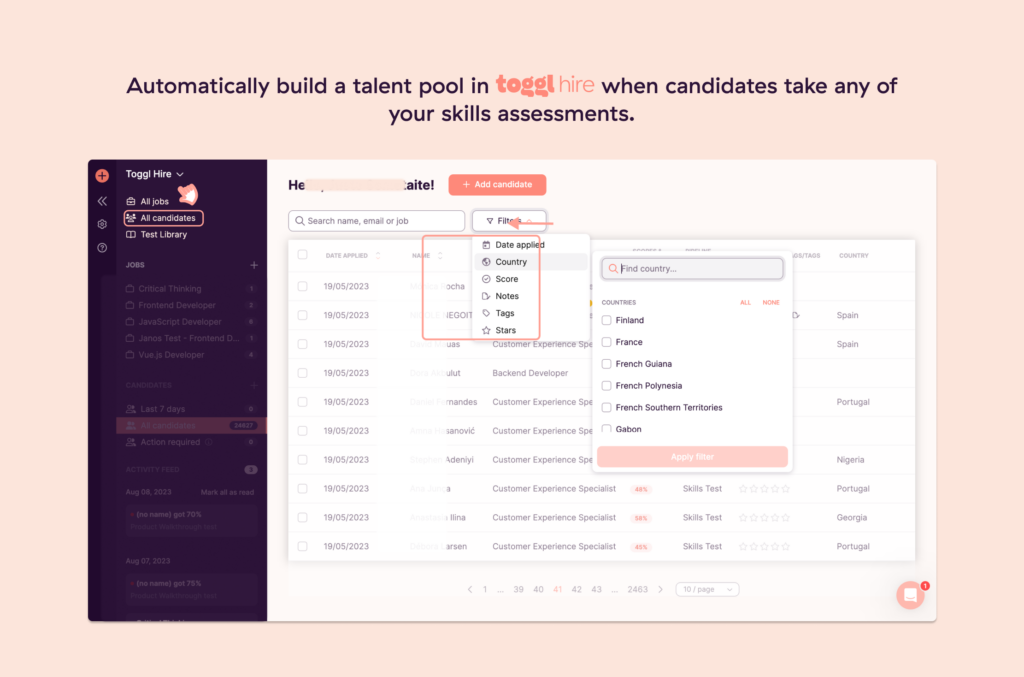
Step 2: Nurture and engage your talent pools
Building talent pools is like tending to a garden: nurturing and engaging them is where the real magic happens.
Simply collecting candidate details and storing them in a database won’t help you build strong relationships and keep candidates excited about the possibility of working with you. To stay connected with candidates in your talent pools, consider the following strategies:
- Provide value by sharing high-quality content, such as commentary on the latest industry news, research insights, and professional resources.
- Create networking opportunities by hosting free events and workshops for qualified candidates to meet and engage with your employees, learn from peer-to-peer feedback, and enjoy the benefit of free pizza.
- Organize career days to give qualified candidates a glimpse into your company culture and career opportunities.
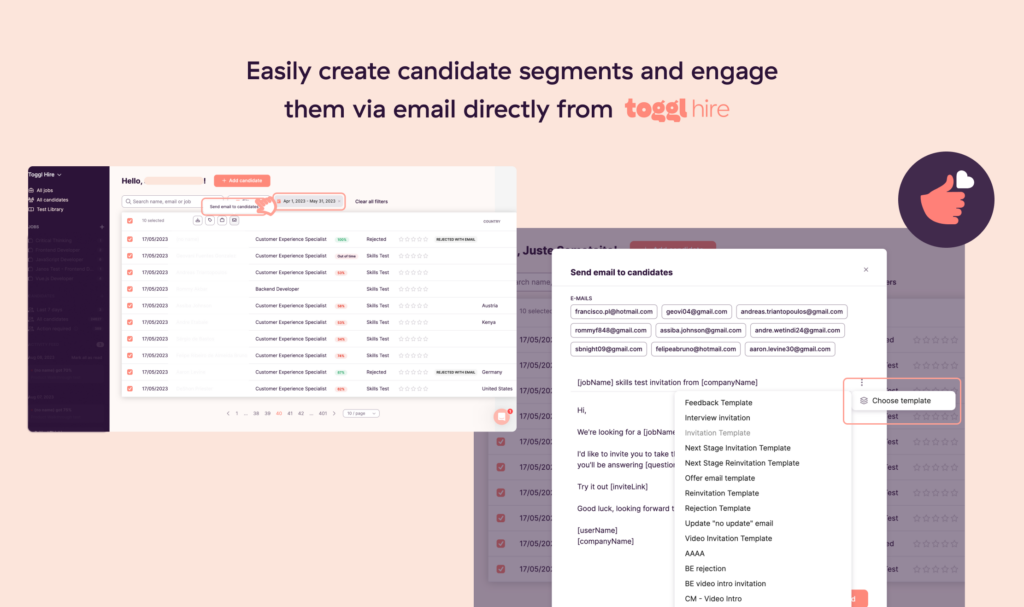
Don’t forget the power of personalization, either:
- Reach out to candidates with tailored messages acknowledging their unique skill sets and interests.
- Use their preferred communication channels, whether it’s email, social media, or even a good old-fashioned phone call.
- Let them know they’re more than just another name on a list — they’re valued members of your talent community.
Leverage technology to make nurturing and engaging easier. You can use HR tools and applicant tracking systems to streamline your efforts. This way, you can reach a larger audience while still maintaining a personal touch.
Unsure which tools to use? Read through our complete breakdown of the 15 best recruiting tools this year.
Step 3: Recruit from your talent pools
When it’s time to fill a new position, recruiting from your talent pools can feel like finding the perfect puzzle piece from a collection you’ve been carefully curating.
The first step is to tap into your connections. Reach out to the candidates in your talent pools who have the skills and qualifications you’re seeking.
Make it personal and craft messages that show genuine interest in their career goals and how they could contribute to your company. It’s about making them feel special and excited about the opportunity. And don’t forget to highlight any new developments or perks that might pique their interest. After all, you want them to be as enthusiastic about the job as you are.
Timing is everything too. Keep an eye on the ebb and flow of your talent pools. When a position opens up, strike while the iron is hot.
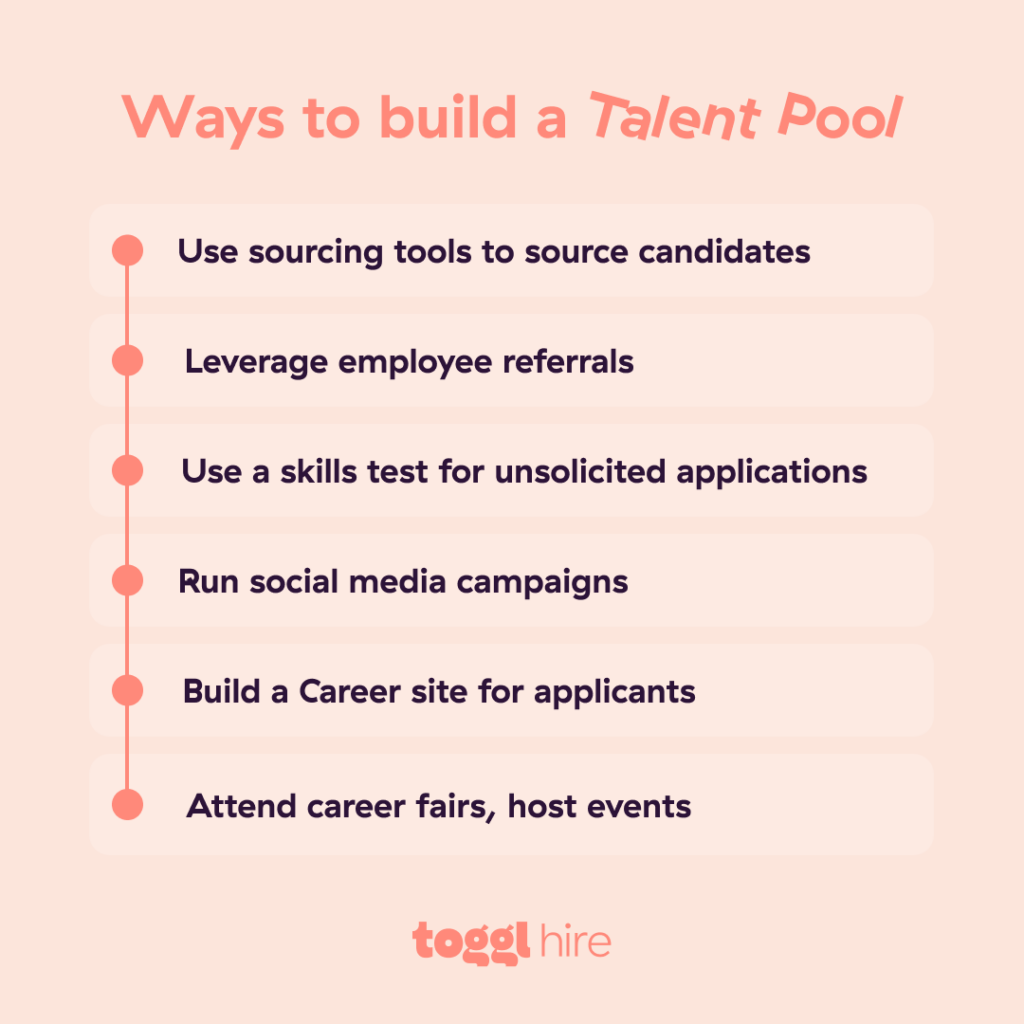
Step 4: Source your talent pools
- Social media — Use social media to create content showing why your business is a great place to work, and include a call to action that drives candidates to your career site. LinkedIn is an excellent platform for this, but don’t ignore “non-professional” social platforms, such as X (formerly Twitter), TikTok, and Instagram, if you want to target a particular demographic.
- Careers pages and job boards — Don’t miss the opportunity to capture the details of candidates actively searching on your career site or interacting with your job boards. Drive them to sign up for your talent pool by submitting a free application, so you can stay in touch with them and notify them when a good fit role becomes available. Many job boards also allow you to capture information from candidates who have viewed your vacancies.
- Previous applicants and employees — Ask unsuccessful candidates and previous employees if they want to be added to your talent pool. This is a great way to keep in touch with job seekers and to consider them for future roles.
- Referrals — Employee referrals are a great way to source top talent. Incentivize your staff to refer the best people in their network to get more submissions.
- Recruitment agencies — Work with recruitment agencies to source candidates for specific roles. This can be a great way to reach a wider pool of candidates and find top talent you may not be able to find on your own.
8 tips to keep your talent pool super high-quality
Great, you now know what a talent pool is and how to build one, now it’s time to focus on the quality. A database is only as good as the quality of the candidates within it. Don’t fall into the trap of having a poor-quality talent pool by following these tips.
#1. Focus on culture
When you’re doing talent pool outreach, make sure to entice job candidates with the job role itself and the overall company culture.
More and more businesses are giving greater favor to external candidates that align with the company values and standards rather than focusing solely on skills. Ultimately, skills can be learned, but the way people think, act, and behave can’t always be changed.
As part of your talent pool application process, include situational awareness, value, and worldview questions to identify candidates who will fit into your business seamlessly. We’ve pulled together a piece on the best cognitive ability assessment tools to try if you want to learn more.
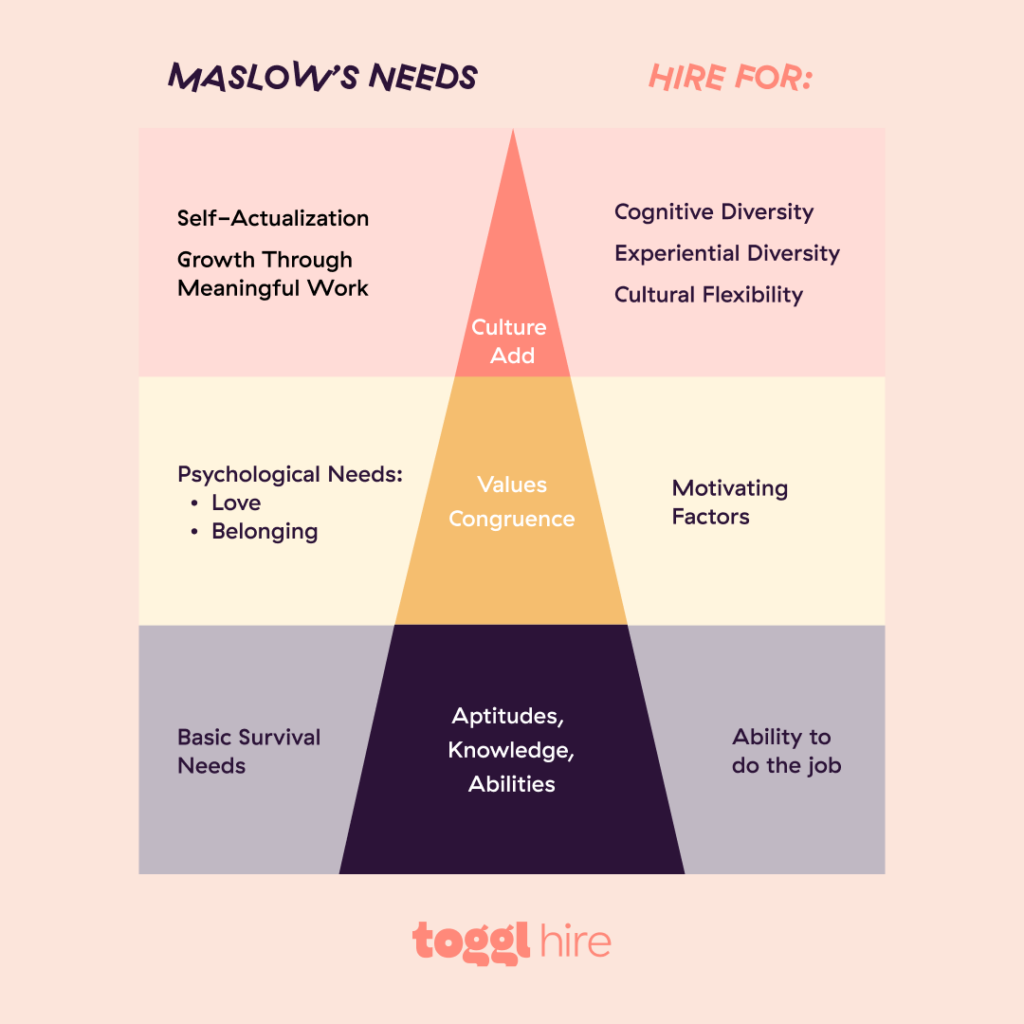
#2. Focus on niche job boards
If you’re attracting talent pool applicants through job boards, it’s time to take a more targeted approach. Given building your talent pool isn’t based on volume but rather quality, the mainstream job boards such as Indeed and Monster may create too much noise.
Instead, focus your efforts on niche job sites targeted to the type of talent you are looking for. This isn’t just about skills either — ensure you also consider ways of working. While there are specific job boards for developers, salespeople, or legal professionals, job boards also exist for full-time remote workers and freelancers.
#3. Test candidates during the initial application process
One of the easiest ways to keep your talent pool quality super high is to create a standard of entry. Why let anyone join when you can test candidates’ abilities and filter out the best?
Skills testing tools allow you to create bespoke tests, which can be used as the perfect benchmark for your talent pool. Tests are quick and easy to set up with a range of pre-set templates for popular job roles such as Account Executives, Data Scientists, Product Managers, and many more.
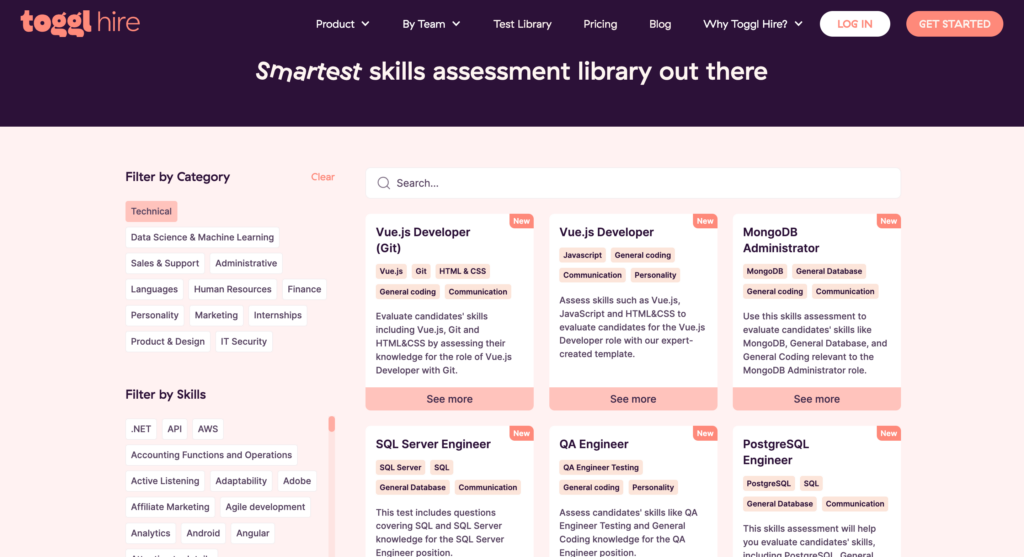
If you need some more proof, you can check out how companies across the globe use Toggl Hire to simplify all aspects of their hiring.
#4. Check their credentials
If you’ve got the time and resources, a great way to keep your talent pool quality in tip-top shape is to do a customary check of every application you receive.
This could be as light or as thorough as you need. If you’re looking for something quick, you could easily jump onto the candidate’s LinkedIn profile to cross-check their credentials or add in a short phone interview if you want more detail.
Doing checks like these (and telling people you’re going to do them) means candidates are less likely to submit false information into their applications and thus gives you confidence that they are who they say they are.
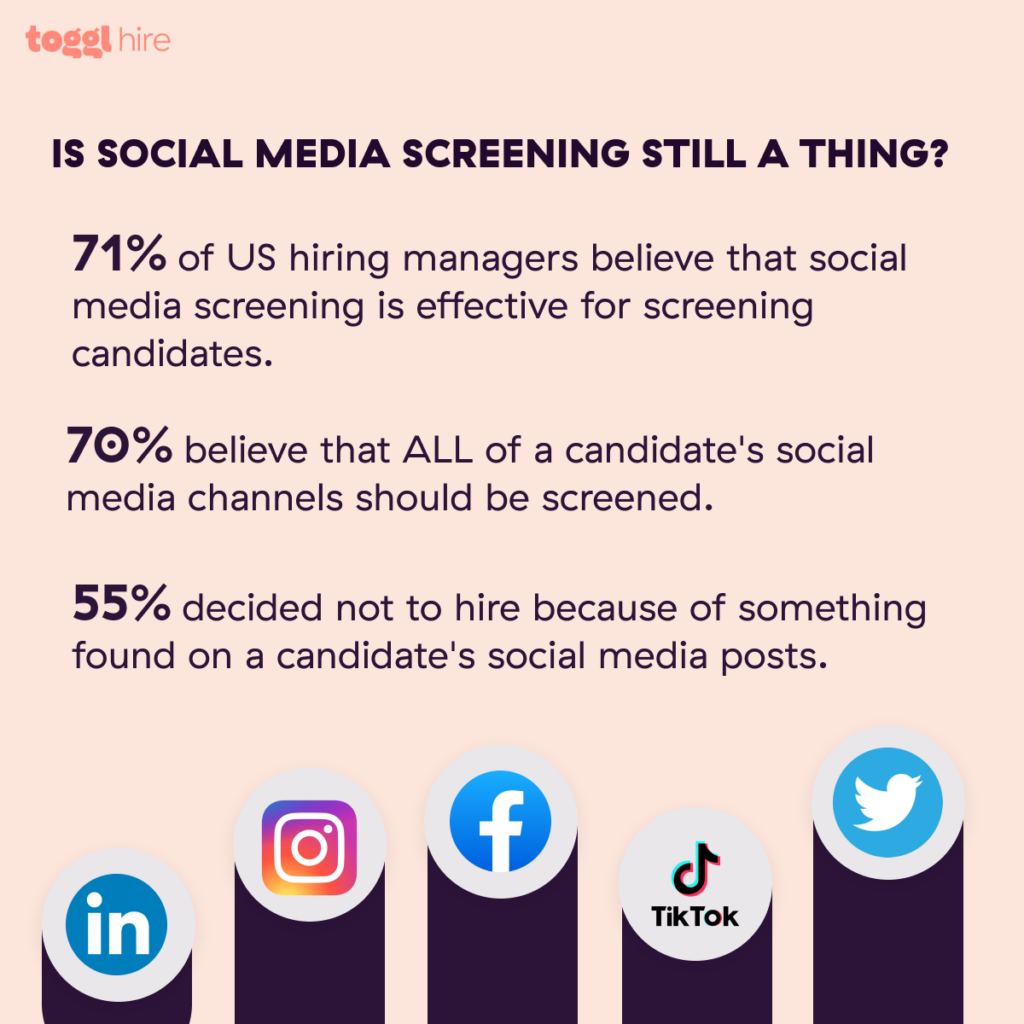
#5. Regularly cleanse your talent pool
Like all databases, you should regularly cleanse data that are out of date. This should be a priority for every recruiting team.
If someone applied to your talent pool a long time ago, the chances are their situation may have changed, and their initial interest may no longer be valid.
If you can automate your processes, try a pre-cleanse email. That way, you also give the future candidate an opportunity to re-submit their interest or update their profile to reflect their most up-to-date information.
Ultimately, whether you end up removing candidates or getting more up-to-date information, you know your talent pool is more current, and, by default, the quality is much higher!
#6. Polish your employer branding
Boosting your employer brand efforts will go a long way with external recruiting. It’s not just about attracting candidates to the job itself but also creating an enticing company culture.
In today’s competitive job market, candidates are looking for more than just a paycheck. They want to be a part of a company that aligns with their values and offers opportunities for growth and development. By showcasing your unique company culture, values, and employee benefits, you can attract top talent who are not only highly skilled but also excited to work with you.
Invest in building a compelling employer brand through your website, social media presence, and other recruitment channels. Highlight your company’s mission, values, and employee testimonials to give candidates a glimpse into what it’s like to work with you.
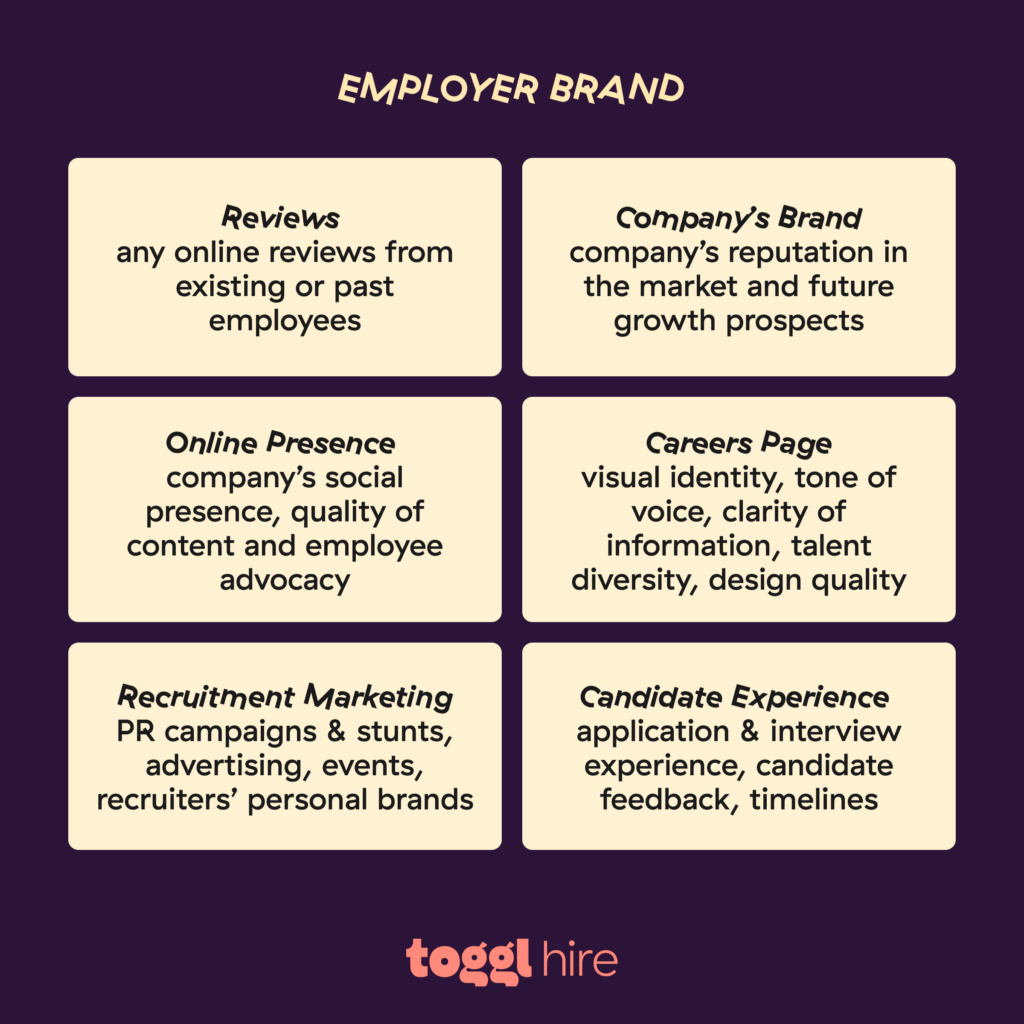
#7. Engage passive candidates
While having an active talent pipeline is important, don’t overlook the potential of passive candidates. These individuals may not be actively looking for a job, but they could be open to new opportunities if approached in the right way.
Engaging with passive candidates requires a strategic approach. Keep an eye out for professionals in your industry who demonstrate potential or align with your company’s values. Reach out to them through personalized messages that highlight the specific reasons why they would be a good fit for your organization.
Use your talent pool to nurture relationships with passive candidates over time. Share valuable industry insights, relevant articles, and updates about your organization that could pique their interest. By consistently staying on their radar and building a rapport, you increase the chances of them considering a future opportunity with your organization.
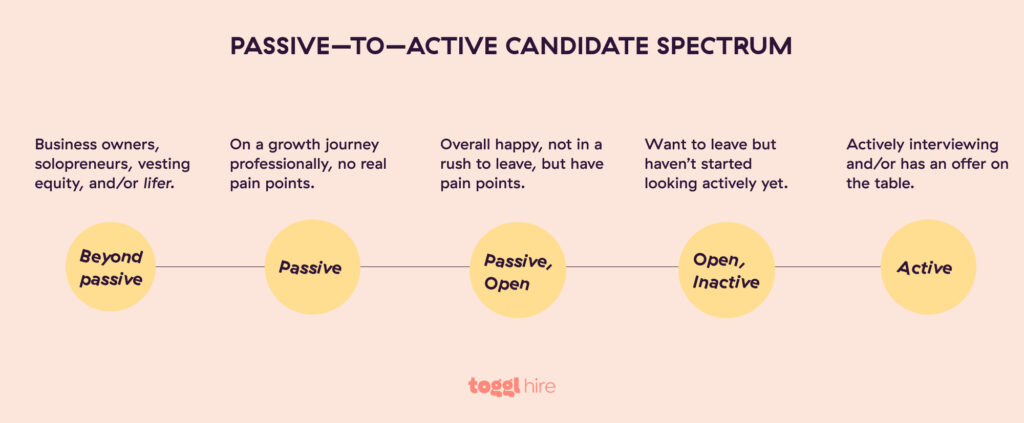
#8. Partner with universities or bootcamps
To access a pool of fresh and talented individuals, consider establishing partnerships with universities or bootcamps. These institutions are hubs for emerging talent and can provide you with a pipeline of potential candidates who are equipped with the latest knowledge and skills in their field.
By collaborating with universities or bootcamps, you can participate in career fairs, guest lectures, and workshops to showcase your organization and attract top graduates. You can also offer internships, co-op programs, or mentorship opportunities to engage with students and establish a strong connection early on.
Building relationships with educational institutions not only allows you to tap into a diverse talent pool but also gives you the chance to shape and mold future professionals who may become the right candidates.
Building a high-quality talent pool with Toggl Hire
One of the biggest challenges that recruitment professionals face is sourcing talent at speed. With time-to-hire being a key metric, having access to engaged talent on demand is crucial for hiring the best people.
Toggl Hire is a skills-based hiring platform that can help businesses build and maintain a strong talent pool with a variety of features that cut down hiring time.

Juste loves investigating through writing. A copywriter by trade, she spent the last ten years in startups, telling stories and building marketing teams. She works at Toggl Hire and writes about how businesses can recruit really great people.












